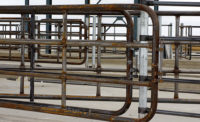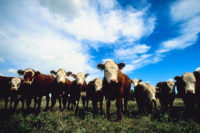AAMP
Animal welfare: The multiple pieces of successful stunning

Whether it is on the phone in my office in Elizabethtown, Pennsylvania, a convention for one of our state affiliates or one of our small plants across the country, if the conversation is about humane handling, we are talking about stunning and the enforcement by USDA Food Safety and Inspection Service (FSIS) on mis-stuns. If you are one of our numerous members who still do slaughter operations at your facility, you know that enforcement has become way too heavy-handed and inconsistent at best. It is becoming increasingly more difficult to understand some of the steps taken by inspection personnel in response to a plant having a mis-stun. Depending on your inspector and what part of the country or state that you are in, you could receive anything from a noncompliance report (NR) all the way up to a suspension of your slaughter floor.
This is an area we will continue to work diligently on in Washington to get clarity and common sense in the enforcement of the humane handling regulations, but that is not what this article is about. I want to discuss what our responsibility is as an industry and as individual businesses to this issue and the steps we need to take that gives us a better chance of being incident free on our kill floors.
As I listen to plant owners talk about the issues they have had in this area and I read the humane handling incidents information provided by FSIS, I have noticed a recurring theme in plants that have had multiple issues with mis-stuns. A large number of plants who have multiple mis-stuns do not employ any type of head restraint on the animal they are attempting to stun. This is usually an area that FSIS points to as a contributing factor to the mis-stuns occurring in those plants. FSIS usually encourages plants to investigate either building or purchasing a head restraint for their kill floor. Oftentimes this becomes part of the plant’s corrective actions. I am not saying that head restraints will take care of all your kill floor issues, but I believe it will go a long way toward reducing and almost eliminating them. There are other steps that can be taken as well that will help to reduce the number of humane handling incidents in your plant each year.
Proper training for your employees is one of the most effective ways to eliminate human handling incidents. Your employees play a key role in the proper stunning of an animal in your facility. Getting an animal from the pens, through the chutes and into the knock box with the least amount of stress is foundational to a successful stun. The remainder of that success rests with the person doing the actual stunning of the animal, and training for these employees needs to be a top priority. It is essential that the person doing the stunning be provided with enough training that they are confident in what they are doing and not hesitant every time an animal enters the knock box.
I would encourage you to use the training video provided for you on the AAMP website. It is about 12 minutes long and shows the heads of multiple species, detailing not only the proper shot placement but also the shot angle needed to be able to have the best chance of getting to the brain stem. There are also a lot of other training materials available to help with everything from animal handling all the way to the stunner.
We also need to spend time looking at our facilities and how we improve how an animal gets from the pens to the knock box. Take time to walk into your plant the way an animal does on their way into your plant. Observe the angles of the chutes, the lighting and the floor. Look to see if there is anything that would make an animal be hesitant about entering your plant. Every animal is different, and some are high-strung no matter what you do, but we need to make an effort to make things as easy as possible to get animals into the knock box with as little stress as possible.
As we have looked at all of these items, no single item by itself will eliminate stunning issues, but putting them all together will go a long way towards eliminating them. Going back to the beginning of the article, I believe having a head restraint will reap benefits far beyond the cost. It is a lot easier to hit an almost stationary target than a moving one. This will instill confidence in your employee doing the stunning.
I know some of you have good employees who do not want to stun anymore after having an incident, because of the enforcement action and loss of confidence. It is especially tough, because your inspector is standing there watching their every move, and the pressure of that is hard to deal with. Take time to do some research and see what is new in the industry when it comes to restraints and look for a cost-effective way to do this for you and your employees. It is important that we as an industry continue to do our part in humanely handling and processing animals through our facility. There will always be an issue with enforcement, but it is much easier to fight for common sense solutions when we know we are doing our best for the animal, our employees and ourselves.
Looking for a reprint of this article?
From high-res PDFs to custom plaques, order your copy today!






